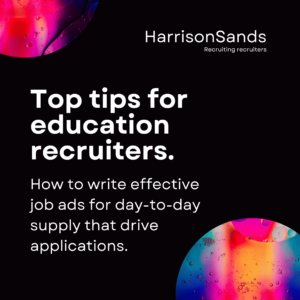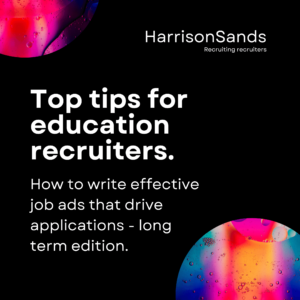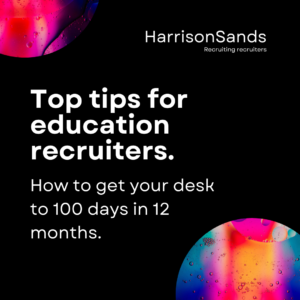So you’ve created a winning CV using our Fundamental CV Writing Tips article and avoided all the errors we outlined in our Mega List of CV Errors article. You’ve found the right role and applied, and you’ve been invited for an interview. No doubt you’ll have read through our Essential Interview Preparation Advice article, and now it’s time to put your presentation together. Our interview presentation tips will guide you through the steps you need to take to create and deliver an amazing presentation.
Creating your presentation
Tools
These days, there are some really great tools out there to help you create a visually brilliant presentation. Whether you’re using Microsoft’s PowerPoint, Apple’s Keynote, Prezi or Google Slides – there are lots of helpful guides and templates available online. And whilst these tools offer lots of help and design tips, it’s also important to remember some basics about how best to build your presentation.
Animations
Animations are a divisive topic, with some people loving them and others hating them. The reality is that if they’re applied sparingly and integrated into the presentation so that they complement what’s being delivered without distracting, they can be a great tool.
Focus on content & structure
Focus on the content too, and not just the aesthetics. And structure your presentation so that it has a clear flow so that you’re not overloading individual slides. A well-structured presentation would typically have overview and summary slides that sandwich the bulk of the presentation. Effectively you’re telling the interviewer what you’re going to tell them, then actually delivering the presentation, and then recapping on everything you’ve said. It helps cement in their memory all the things you’re telling them and is a great way of ensuring that you’ve not missed anything out that they were expecting.
Don’t overload slides
On the point of not overloading slides, we’d recommend having no more than 3 – 5 points per slide. Text-heavy slides won’t do you any favours, especially if your interviewer ends up reading the slides instead of listening to what you’re telling them. That’ll seriously limit any chance of building rapport with them too.
Stick to the brief
Most importantly perhaps, stick to the brief. If you’re invited to interview, you’ll typically be asked to present either on a specific topic or topics, or to provide a background about yourself and your achievements. Either way, make sure you do what you’re asked. By all means set the context for what you’re about to say, but you must stay on track, stick to the brief and answer any questions you’ve been asked.
Do your research
Finally, do your research – if it’s a topic you’ve been asked to present on, make sure you know it… if it’s about what you’d do at a company, make sure you understand the company and the sector they operate in. So, for example, if you’ve been asked to present on tactics for securing interviews with difficult clients or strategies for building a new recruitment desk in a new geography, be sure that you research thoroughly if you’re unsure how to answer, and be clear when delivering your presentation that you’re giving them what they asked for.
Delivering your presentation
When it actually comes to delivering your presentation, you have the usual advice like establishing eye contact, being well-presented and dressing appropriately, giving a firm handshake, etc. so we’re not going to cover that here. We’re going to focus on the presentation itself.
Practice
Make sure that after doing your research and creating a well-written, beautifully designed presentation that you’ve practised delivering it. Whether that’s sat at home talking to yourself in a mirror, going through the slides with a friend, colleague or partner, knowing your presentation inside and out is absolutely essential. You don’t want to be the one reading from the slides and not knowing what’s coming up next. You want to be able to deliver your presentation in a slick manner, coming across polished and well-rehearsed.
Handling questions
At the outset of the presentation, it’s often a good idea to explain how you want to handle questions. Some people, if they’re nervous for example, prefer to run through their presentation and field questions at the end. There’s no right way of doing this, but our recommendation is to have more of a fluid presentation style and if you feel comfortable enough, let the interviewer know that you’ll be happy to take questions throughout your presentation. In many cases, this is also a good way of demonstrating you know your stuff, as we often see that questions interviewers are asked are answered later in a presentation.
Manage your time
Choosing how you answer questions and knowing your presentation thoroughly means you’ll be able to manage your time well. Most interview presentations are given a time for the presentation and a time for questions… so for example, if it’s 45 minutes for the presentation and 15 minutes for questions at the end, you know you’ve got an hour to play with. So make sure that you can comfortably deliver your presentation and answer a handful of questions within this timeframe. This is where your earlier practicing will really help.
Pacing
Practising and knowing the time available to you will also dictate the pace at which you present. Nerves can sometimes get the better of some people and they’ll accelerate through their presentation, but it’s important to stay calm, remember that you’ve already made it through the initial cull of applicants and focus on the content that you’ve researched and prepared so well. Ideally, make sure you have a visible clock or watch so that you can be sure you’re not going too fast or too slow.
Demonstrate your skills
Interviewers will usually expect recruiters to be good communicators too; after all, you’ll likely be on the phone a lot of the time, and meeting with clients and candidates – so make sure you’re able to demonstrate your communication skills adequately. Calm, considered delivery of a topic you’ve researched or know well and present competently will give a great impression to any interviewer.
Recap
Finally, at the end of your presentations you’ll have your summary slide. Check with the interviewer that you’ve answered the brief and/or suitably answered any questions they’ve raised during their presentation. You want to leave the interviewer with no doubt in their mind that you’re the person for the job and that everything they wanted to know about you, they now know.
Considerations
Follow these interview tips and you’ll be well on your way to acing that next presentation interview. We have just two final pieces of advice to offer though:
1) Anticipate follow up questions. You’ll have probably used examples in your presentation to help bring certain points to life, so whether that’s examples of project delivery, client wins, smashing targets, etc, be sure that you know and remember enough about each that you can expand on any of them if asked.
2) Be ready with your own questions. You want to demonstrate you know the company you’re applying to join and that you’ve taken the time to find out more about them. Don’t just ask about the benefits or the working hours either. Have a look at our Essential Interview Preparation Advice article for some further tips on questions you could ask. And make sure you check out our article: Deadly Interview Mistakes To Avoid too.
And if you want to talk through your recruitment needs, want advice on your job search, or need some specialist rec2rec support, then the team at Harrison Sands are ready and waiting to work with you so contact us today.


